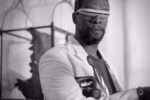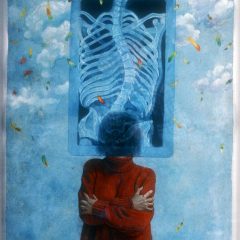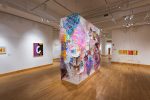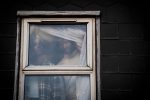[Leah delves into tropes associated with both the gay and Jewish communities, and examines how a new show challenges expectations. — the Artblog editors]
When I initially heard about Gay, Jewish, or Both at NAPOLEON, I was very enthusiastic. The subject is a delicate one; however, it is also very contemporary and full of potential for rich discourse. The exhibition is perplexing. On the one hand, I was not sure how I felt, but on the other, I knew that I was being asked to digest some difficult ideas. As a Jew who was raised by a lesbian, I often find myself troubled by the Torah’s position on on gayness (which is not necessarily supportive).
The magical thing about this installation is that it inspires people to share very personal things, which is an important step toward real conversation. It is important for a conversation to include a diverse range of voices. I know those who have a connection to either the gay community or the Jewish community (or both) might feel this; however, I wonder if “outsiders” can relate to the show’s issues in the same way.
Examining the relationship between both communities
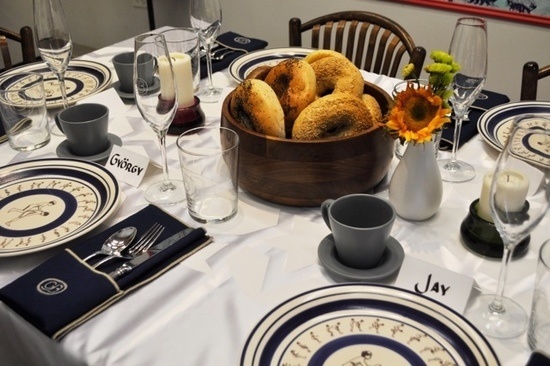
The relationship between these two groups is a fascinating one. As Shelley Spector stated in “The Secret Handshake: An Essay on Gay, Jewish or Both,” each group shares a history of oppression. When one group has experienced marginalization, as the gay community has, it always makes lack of support from another unprivileged group, like the Jewish community, seem all the more unfounded.
However, most Jews today are very supportive of the gay community, despite what the Torah says…that being said, most Jews today are also not practicing what the Torah says to the letter of the law. There is a famous Orthodox rabbi in Colorado–Rabbi Zalman–who is one of the few highly observant rabbis who will voice support for the gay community, so I suppose there is always an exception.
Although the Torah definitively states that being gay is not okay, it also states that a Jew must not get a tattoo, and that a Jew must keep kosher. Many Jews have broken these laws, but this does not make them less Jewish, and despite popular belief, it will not prohibit them from being buried in a Jewish cemetery. This is not to compare being gay and keeping kosher, but it is important to understand that it’s fine to live with middle ground. This is especially true when regarding something as complex as personal identity.
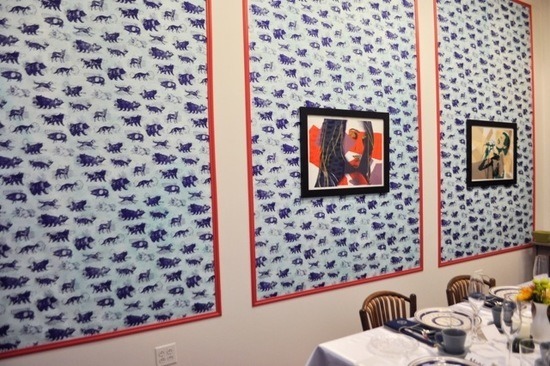
Now a remaining obstacle is to gain full support for the gay community from the entire Jewish community (and the rest of the world). This might not happen anytime soon, but the beautiful thing about having the freedom to choose what to think is that we do not all have to agree; we just have to be nice to each other. Just because a person does not follow the entire Torah does not mean he can’t follow or learn from any of it. I also think it is important to understand that someone can disagree with you and still like you as a person, even though this lack of acceptance is very difficult.
A huge problem in contemporary debates is the lack of communication. The best possible scenario is to see two groups who fundamentally disagree being able to engage in a conversation while truly respecting each other (easier said than done). Projects like this one by Friedman and Margulis begin the difficult process of starting a conversation, although I am not sure if I am clear on Friedman and Margulis’ stance(s). I think Gay, Jewish or Both might be slightly guarded in its opinions, or maybe the project is altogether inconclusive. Perhaps the exhibition simply serves to present a question to viewers.
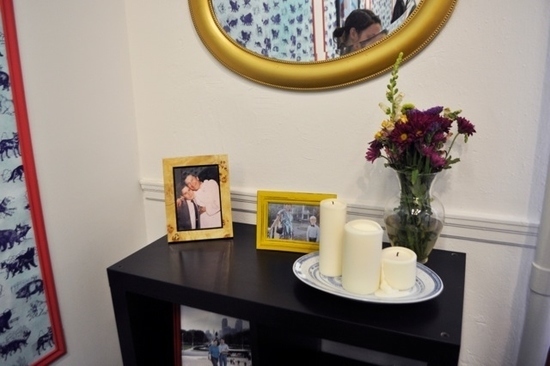
Putting the installation in context
The thing that is amusing about this dining room environment is its subtlety/ambiguity. With a name like Gay, Jewish or Both, Friedman and Margulis had room for quiet references. Immediately upon entering the installation, I noticed the Jewish celebrity prints. Although Natalie Portman is no Mayim Bialik or Barbara Streisand, she did help clue me in, as a person with acute Jew-dar, that this might be a Jewish reference. These works in particular reminded me of Deborah Kass’ work “Four Barbaras,” from her 1992 series “Jewish Jackies”. The work was shown in the exhibition Too Jewish? at the Jewish Museum in New York, curated by Norman Kleeblatt. Kass used Streisand as an example of a rare idol, bringing a positive image to a group of people associated with only negative things.
I enjoyed the repetitive prints seen throughout the Friedman/Margulis installation, and I felt that they really tied the room together. The attitude of the installation also reminded me of Neil Goldberg’s work, particularly his sculpture seen in Too Jewish? called “Workout Tallis”. Like Goldberg’s piece, the Friedman/Margulis piece combines Jewish and homosexual cultural implications to draw out an identity-based discussion.
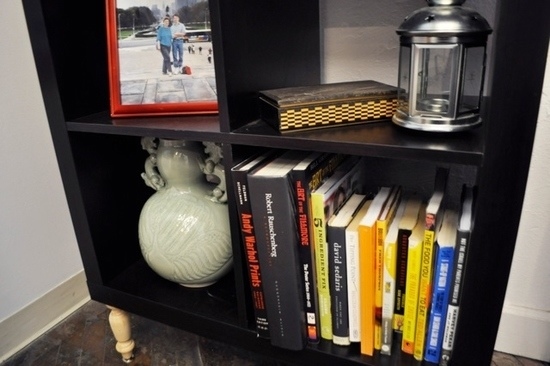
While the wallpaper prints on the wall in Gay, Jewish or Both are very beautiful, I wanted them to function more as real wallpaper and pieces from our gay-Jewish-fictional-hosts’ personal collection. I was not sure if they were fine art pieces functioning on their own, or props for the installation. I noticed the small vase of wilting flowers: quite a melancholy sight. I thought that these flowers might have started off alive and then slowly died as the exhibition continued. The idea of this ephemeral progression is quite sad and beautiful. The dead flowers sitting amid the pristinely set table is a bit off-putting but very poetic; to me, this juxtaposition is symbolic of the struggle experienced by both the gay and Jewish communities.
Challenging stereotypes and inviting judgment
As much as I enjoyed looking for the Jewish cues, I was not as successful at picking up the gay ones, probably because I am straight. I thought perhaps the rooster was a subtle gay representation, but all I kept thinking about was how some of the farm animals depicted in the prints were not kosher. For me, this array of animals was more of a representation of childhood. The very specific decoration of the space and its perfectionist attitude spoke about the stereotypical gay male. The Muybridge figures on the plates could be perceived as sexual: another stereotypical association with the gay community often made by society.
The show’s press release stated that Gay, Jewish or Both was meant to spark the viewers’ curiosity about who the host of the party might be. One thing the title kept reminding me of was a conversation I had with a friend a few months ago. We were trying to decide if someone was gay, and my friend asked her mother. My friend said, “I can’t decide if he is gay or just Jewish,” and her mother replied, “I think that is something all Jewish men have to cope with.”
I found this so funny, because it reminded me of the (very politically incorrect) game “Gay or European,” wherein you try to place the identity of a stranger. This is done through examining arbitrary qualities, and of course, is a very limited understanding of a fellow human being. Trying to determine whether a man is gay or just exists outside of American social expectations is a pretty ridiculous concept. In this case, the expectation of gay and/or Jewish men is that they should be macho; they should appeal to certain visual standards; and they should act a certain way. This exhibition seemed to play up the feminine qualities that might be associated with a gay or Jewish male. The physical space spoke to me about this metaphorical space, where the Jewish gay male might exist or be imagined to exist. I’m not sure how “macho” and “aloof” became expected male standards, but I think Gay, Jewish, or Both has done a good job deconstructing and challenging this idea.
A gap, bridged
I feel that the host from Gay, Jewish or Both is both. He is a subject of scrutiny, but also a member of two very special communities. He is a person who is continually coping and situating himself within society and his own identity, as a lot of us are! After considering what I had seen and allowing myself to be confronted with it, I decided this show had allowed me to grow by forcing me to think, and therefore it was very successful.
Gay, Jewish, or Both is on view at Napoleon until January 30th, 2014.


